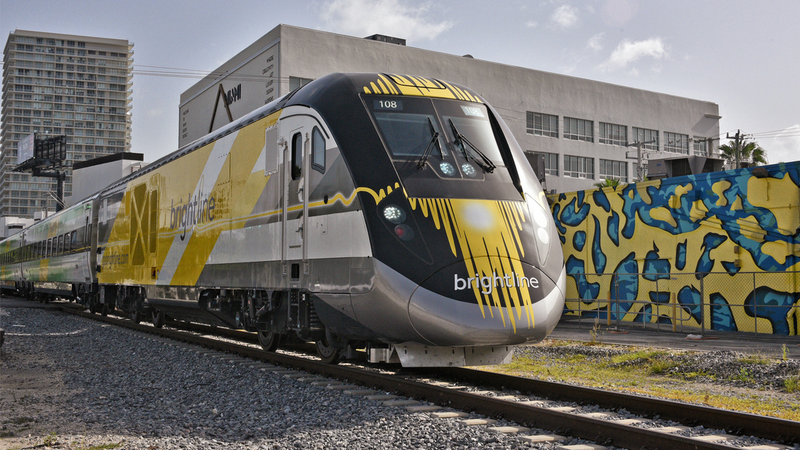-NPR

The country's first private high-speed rail service is opening this month in Florida, promising to transform congested South Florida highways by taking as many as 3 million cars off the road.
The ambitious $3 billion Brightline express project will run along the state's densest population corridor with more than 6 million residents and a regular influx of tourists. The project, funded by All Aboard Florida, represents the first test into the long-awaited U.S. move into high-speed rail, says John Renne, director of the Center for Urban and Environmental Solutions at Florida Atlantic University.
"It's the first time that it's happening, being built by a private company," he tells Here & Now's Jeremy Hobson. "And that's kind of a game changer for this type of model."
The model includes developing retail, restaurants and condominiums around the stations. All Aboard Florida secured state approval in October to sell bonds to fund the project. The company has said no public money will be used.
When the service starts this month, Brightline trains will run from West Palm Beach to Fort Lauderdale. Service will expand into downtown Miami early next year and likely to Orlando in the future. Renne says the trip from West Palm to Miami, which can take up to five hours round trip in a car, will take about 60 minutes each way on the train.
Beyond slashing travel times, Renne says the construction of private mixed-use real estate developments at each station will bring in hundreds of millions of dollars in new revenue. He explains that potential revenue was lost when the government shifted control of transportation to the public sector in the 1920s.
"When that happened, we lost the connection between the development around the stations and the rail service itself, and we started building a lot of parking lots around the stations," he says. More people stopped using public transportation because "once they're in their car, they might as well just drive the whole way."
Renne says Brightline trains will have their own dedicated set of tracks, built alongside 19th century lines that still carry cargo trains. The return to passenger trains will revive a line that stopped running on those old tracks in the 1960s, with the arrival of the federal highway program.
No comments:
Post a Comment